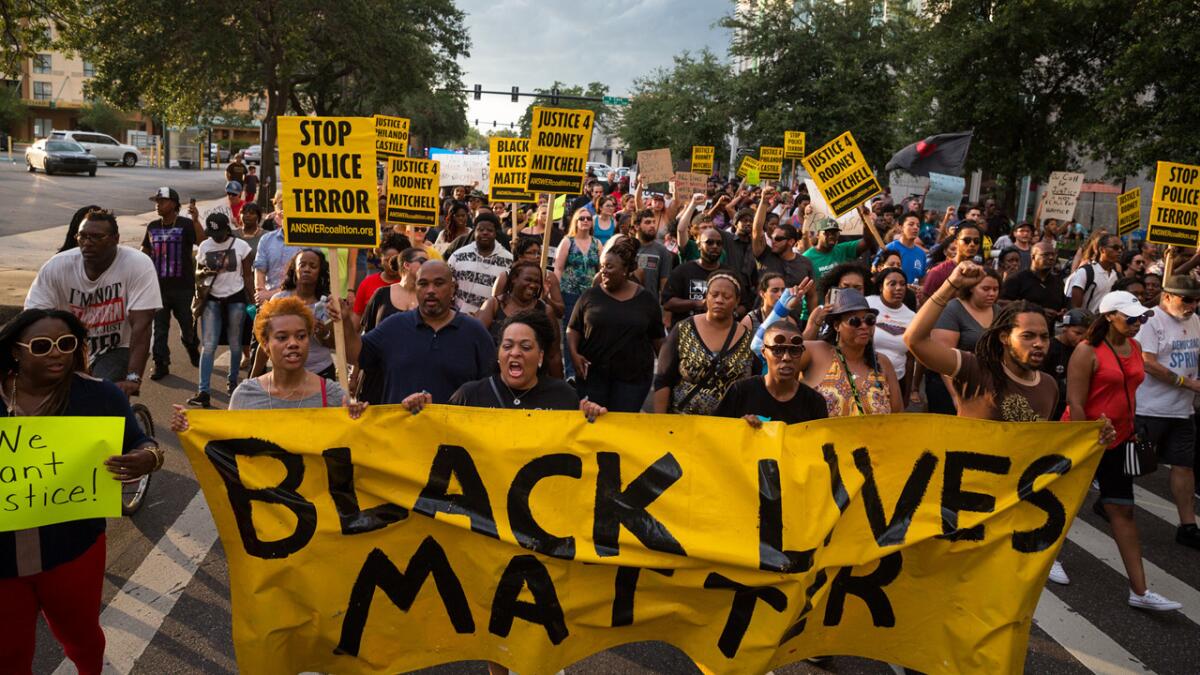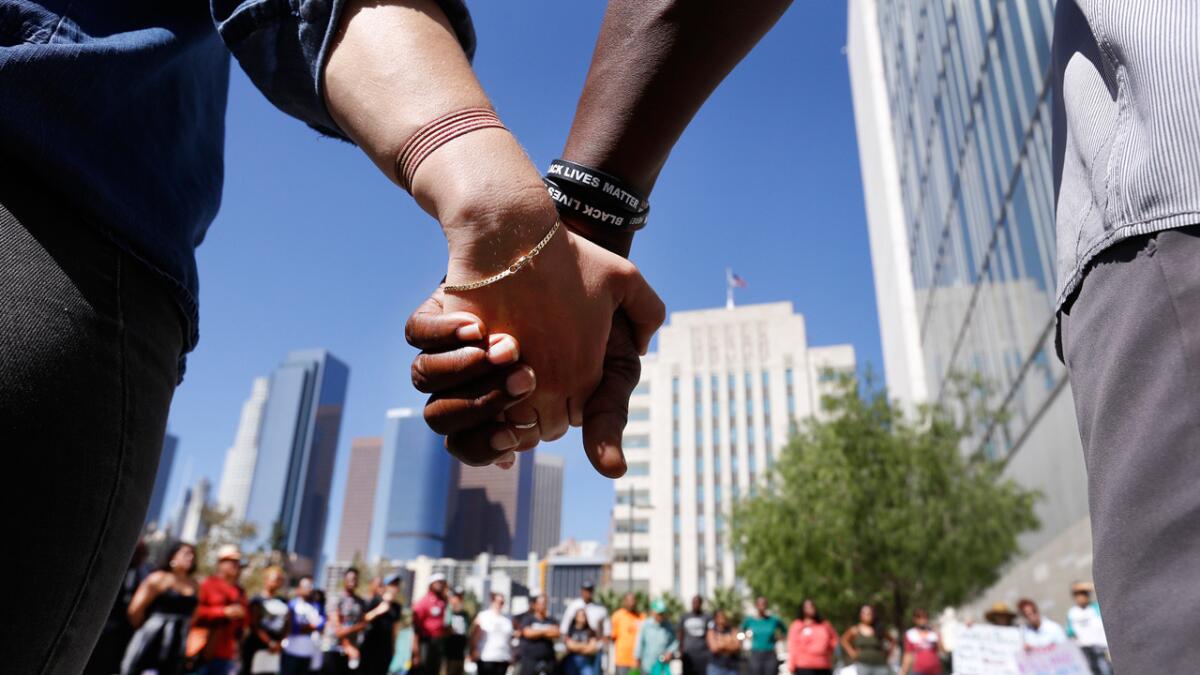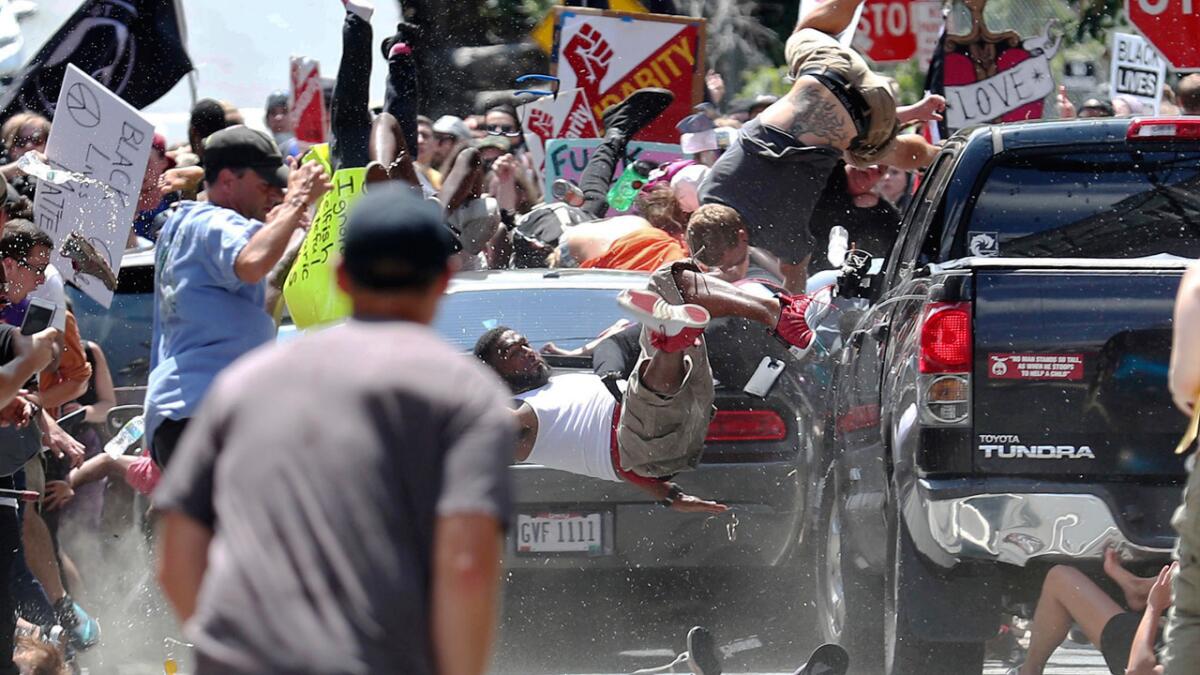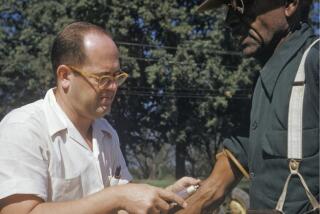America’s psychologists want you to understand how racism holds our country back

The nation’s psychologists want us to talk about race. Not in the hushed confines of a therapist’s office, but in classrooms, church basements and workplaces.
If that feels like a daunting task, don’t worry. The mental health experts have launched a video series to get you started.
The first installment debuted online this year. In 18 minutes, it outlines the myriad ways that the stress of racial discrimination insinuates itself into the lives of people of color. It also lays out the toll of race-related stress on physical and mental health. By sharing stories from a variety of perspectives, the video aims to make people more open-minded and empathetic as they embark on these difficult but necessary discussions.
Future installments will drill down on the effects of stereotyping, implicit bias and the subtle forms of disrespect termed microaggressions.
None of these topics is controversial among psychologists, who have studied the manifestations of racial discrimination and are in no doubt of their existence and power.
But as race has taken a more central role in political and social discourse — on policing, college admissions, immigration and politically correct speech — the need to grapple with these ideas only grows.
“It’s time,” said University of British Columbia psychologist Toni Schmader, who has conducted widely cited studies on the power that prejudice and stereotypes exert over human health and behavior.
Schmader acknowledged that frank discussions of race stir up powerful emotions for almost everybody. “The key point,” she said, “is that we shouldn’t avoid that discomfort. … We should try to understand those emotions and process them collectively.”

Easy, perhaps, for psychologists to say. Researchers in the field have long explored the impact of adversity, social exclusion, bias and stereotypes on everything from depression risk and cardiovascular health to sleep quality, task persistence and working memory.
The video series is aimed not just at “well-intentioned white folks,” said Tiffany Townsend, director of the American Psychological Assn.’s Office of Ethnic Minority Affairs. For persons of color who have been on the receiving end of prejudice and discrimination, the videos may help identify feelings of stress and self-doubt, and recast them in a way that immunizes them against racism’s toxic effects.
“It’s not, ’What’s wrong with me?’ but ‘What’s going on in this broader context and how is it affecting me?’” Townsend said.
The series begins by casting the experience of minorities in 21st century America against the backdrop of slavery and the institutionalized racism that followed emancipation. Experts discuss the subtle and pernicious effects of feeling that one’s family and physical well-being are controlled by forces that are indifferent at best and hostile at worst.
Take Jessica Jackson, a clinical psychologist with the Department of Veterans Affairs’ ambulatory care center in downtown Los Angeles. On her first day in a high school honors English class, her teacher took one look at her and insisted that she was in the wrong room. For the entire semester, Jackson said, the teacher gave her lower grades than her classmates, even on work completed as a group.
The humiliation has stayed with Jackson to this day.
“It left a stain on me,” said Jackson, who is African American. “In every academic setting, I need to prove that I need to be there.”
Psychologist Thomas A. Parham, president of Cal State Dominguez Hills, explained how the persistent insults of racial injustice can make people want to seek refuge with members of their own group and eschew everyone else.
“It may allow me to be perceived by my colleagues in my workplace as being this hostile, angry, frustrated individual who nobody wants to be around,” he said. ”What they can’t see is the pain and the anger.”
And then, between the footage of white nationalist rallies and controversial police encounters, there is basketball superstar LeBron James, making it simple: “No matter how much money you have, no matter how famous you are, no matter how many people admire you, being black in America is — it’s tough,” he said after a vandal scrawled a racial slur on his Brentwood home.

In the best of times, frank conversations about racism are hard to start and likely to end with resentment, recrimination and defensiveness.
And by most accounts, these are not the best of times. In May, some 64% of Americans who participated in an NBC/SurveyMonkey poll said they consider racism a “major problem” in our society and politics, and 45% said they believe race relations in the United States are getting worse.
But respondents reported starkly different everyday experiences of racism depending on their racial and ethnic backgrounds. Four in 10 African Americans said they had been treated unfairly in a store or restaurant in the past month because of their race, and close to half said they had experienced racial discrimination in the workplace.
Among Latinos, a quarter said they had recently been subject to unfair treatment in a public place and more than one-third reported workplace discrimination on the basis of their ethnicity. For whites, 7% and 14% said they had experienced such discrimination.
To make matters worse, members of different groups diverge by wide margins on how powerfully racism has shaped American society. Fully 84% of African Americans said they believe white people benefit “a great deal” or “a fair amount” from societal advantages that black people do not enjoy, as did 71% of Latinos. Only 47% of whites shared that view.

So it is perhaps no surprise that nearly half of the respondents — 47% — said they rarely or never discuss race relations with family and friends.
The APA acknowledges that in groups where people of different backgrounds converge, “topics of race, discrimination, and privilege remain sensitive.”
Hurtful things may be said. Defensive rants may ensue. Members of minority groups may open themselves to “harassment, job loss, physical violence, or worse,” the APA cautions those who watch the video.
“We warn against using it without having prepared for the conversations that can emerge — it can do more damage,” said Townsend, whose office is producing the videos. “We don’t want this to encourage more dissension. We want to it to encourage conversation and healing.”
In a sense, the initiative might be seen as a form of penance from a profession that helped build up damaging racial stereotypes more than a century ago.
Both the APA and psychologists in general fostered racist notions about the intellectual capacity and emotional maturity of African Americans. For instance, G. Stanley Hall, the APA’s first president, was an influential proponent of “scientific racism” who cast the “lower races” as people trapped at a more adolescent stage of their life cycle.
None of that history is mentioned in the first video, said Virginia Commonwealth University psychologist Shawn Utsey, who studies race-related stress.
“They’re going to pretend they’re at the forefront of this, when actually, they have to clean out their own closet,” he said.
Utsey also faulted the video for depicting a form of racism experienced largely by well-educated, affluent African Americans who come into regular contact with white society, not that felt by low-income blacks in highly segregated communities.
For the African Americans to whom the APA videos seem pitched, racism might take the form of low expectations or impediments to advancement — affronts that can be discussed in “sanitized” terms, Utley said. The more common experience of racism for African Americans is of being “locked out” of a world of privilege that thrives in another part of town.
Psychologists need to acknowledge that, for those African Americans, “racism is like a gas you can’t smell, but it’s really affecting you.”
Bridget Goosby, who studies the health effects of racism and discrimination at the University of Texas, said the video has an overarching message that applies to all people of color: They are not to blame for their feelings of distress.
That means therapists need not help their clients develop more coping mechanisms or better social skills. Instead, they should discuss the structural racism and personal bias that affects them every day at school, in the workplace and in public places.
“Acknowledging that this is all about the society — for psychologists, this is big,” Goosby said.
Townsend said the idea for the videos arose long before the election of President Trump, whose public pronouncements and longstanding challenge to President Obama’s legitimacy have stirred widespread racial resentment. But she acknowledged that the series comes at a crucial cultural moment for the nation.
That may be only partly true, Schmader said. The timeliness may feel sharper to white Americans than it does to African Americans, to whom the stresses that come with minority status are hardly new.
“For those who’ve long held privileged status and haven’t had to think about their own race, all of a sudden this idea of being white — of having a racial identity — doesn’t mean what it meant before,” Schmader said. “Racial minorities in the U.S. know exactly what that’s like.”
MORE IN SCIENCE







